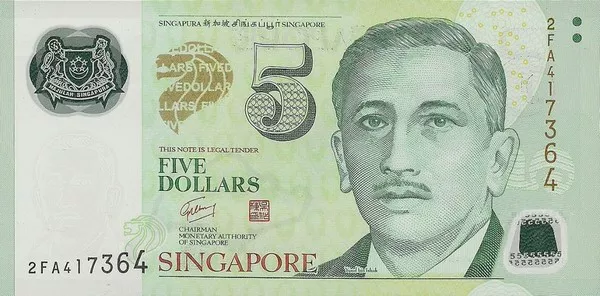The Singapore dollar (SGD) is the official currency of Singapore, issued by the Monetary Authority of Singapore (MAS). As with most modern currencies, the SGD is not backed by gold or any other commodity. Instead, it is what is known as a fiat currency, meaning its value is derived from government decree and the faith and credit of the country’s economy. In this article, we will explore the history of the SGD, its current status as a fiat currency, and the reasons why gold backing is no longer feasible for modern currencies.
History of the Singapore Dollar
The history of the Singapore dollar dates back to 1967 when the former British colony gained independence and established its own currency. Prior to this, Singapore used various foreign currencies, including the British pound and the Malaysian ringgit. The first series of banknotes and coins were issued in 1967, and since then, the SGD has become a leading currency in Southeast Asia.
Fiat Currency vs. Gold Backing
A fiat currency is money that is not backed by a physical commodity, such as gold or silver. Instead, its value is derived from government decree and the trust and confidence that people have in the country’s economy. Fiat currencies are widely used around the world today and are considered more practical than gold-backed currencies because they are easier to produce, store, and transport.
Gold-backed currencies, on the other hand, are pegged to the value of gold. This means that the value of the currency is directly tied to the amount of gold reserves held by the central bank. While gold-backed currencies offer a level of stability and confidence in the monetary system, they also come with significant drawbacks. For example, maintaining a gold standard requires a significant amount of resources and limits a country’s ability to respond to economic crises.
Reasons Why Gold-Backed Currencies Are No Longer Feasible
There are several reasons why gold-backed currencies are no longer feasible for modern economies. Here are some of the main factors to consider:
1. Gold Supply: The global supply of gold is finite and limited, which means that it cannot keep up with the growing demand for money in a modern economy.
2. Economic Growth: A gold-backed currency limits a country’s ability to grow its economy because it restricts the amount of money that can be put into circulation. This can lead to economic stagnation and limit the country’s ability to invest in infrastructure and other growth areas.
3. Inelasticity: Gold-backed currencies have limited elasticity, meaning that they cannot easily respond to changes in demand for money. This can lead to deflationary or inflationary pressures that can be difficult to manage.
4. Storage and Security: Maintaining large gold reserves requires significant storage and security measures, which can be expensive and difficult to manage.
5. International Trade: In today’s globalized economy, international trade requires a flexible and dynamic monetary system. A gold-backed currency can limit a country’s ability to participate in global markets and can make it difficult to maintain balance of payments.
Conclusion
In conclusion, the Singapore dollar is not backed by gold or any other commodity. Instead, it is a fiat currency that derives its value from the faith and credit of the country’s economy and government. While gold-backed currencies offer a level of stability and confidence in the monetary system, they also come with significant drawbacks that make them no longer feasible for modern economies. As such, most countries around the world have moved away from gold-backed currencies and towards fiat currencies, which offer greater flexibility and adaptability in response to changing economic conditions.


